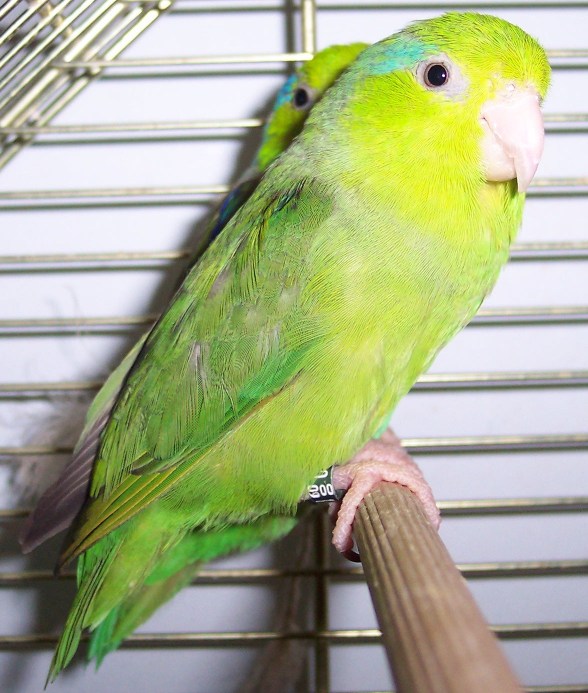- Pacific Parrotlet
Taxobox
name = Pacific Parrotlet

image_caption = Female
status = LC | status_system = IUCN3.1
regnum =Animalia
phylum =Chordata
classis =Aves
ordo =Psittaciformes
familia =Psittacidae
genus = "Forpus "
species = "F. coelestis"
binomial = "Forpus coelestis"
binomial_authority = (Lesson, 1847)
synonyms =The Pacific Parrotlet ("Forpus coelestis"), also known as Lesson's Parrotlet and Celestial Parrotlet, is a species of small
parrot in thePsittacidae family, native to Ecuador and Peru. Its naturalhabitat s are subtropical or tropical dryforest s, subtropical or tropical moist lowland forests, subtropical or tropical dryshrubland , and heavily degraded former forest.Parrotlets are the second smallest of all parrots. Pacific Parrotlets are between 4 1/2 to 5 1/2 inches in length. They come from South America in the area of Peru and Ecuador. There are seven species of Parrotlets. Only three of these species are kept as pets. Of these, the Pacific Parrotlet is the most common. It is sometimes called the Celestial Parrotlet.
The Pacific Parrotlet is green. The males have blue on their wings, backs and streaking back from their eyes. This is true of the male color mutation parrotlets also.
Aviculture
This species is very common in pet stores and is valued by breeders. Its normal price range is 150-200 USD. This price is much lower than other species because since 1930 the US has an established breeding population in captivity before the CITES laws preventing importing wildlife from foreign countries. They have a cost of $2 (two) in Peruvian markets. Some of the color mutations in aviculture include blue, American yellow, American White, European yellow and white, fallow, dark factor green and lutino.
References
* BirdLife International 2004. [http://www.iucnredlist.org/search/details.php/48071/all Forpus coelestis] . [http://www.iucnredlist.org 2006 IUCN Red List of Threatened Species. ] Downloaded on 24 July 2007.
Wikimedia Foundation. 2010.
